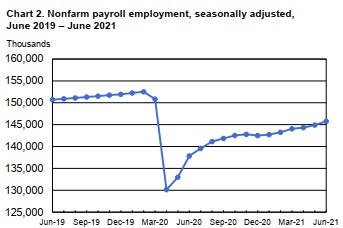Intergenerational Miscommunication in the Workplace
Every generation has been grumbling about the same thing for eons: The younger generation. Here’s a sampling of what some of the complaints in the workplace might sound like these days:
- “Used to be that when I needed something done, I’d ask someone face-to-face.”
- “I remember the days when people started a conversation, they finished the conversation.”
- “Once upon a time, people would come talk to me rather than shoot me an instant message.”
Frustration with Younger Coworkers
Many professionals feel there is acute tension between generations. “I hired a recruiter who is 28 years old,” explains one 45-year-old senior HR generalist from the Pacific Northwest. “Since arriving, my colleagues and I have noticed that he frequently bypasses the chain of command to do what he thinks needs to be done. Although we meet with him to discuss the importance of communicating regularly through the proper channels, it’s as if he just doesn’t get it…. Oftentimes, he’ll up and leave right in the middle of a discussion after coming to me for information. It’s like he’s got what he needed out of the meeting and leaves, because he doesn’t see a need to be there anymore. What he doesn’t see is how insulted I feel by him leaving like that.”
Indeed, those in their 30s and older can find their younger counterparts frustrating to deal with. These more seasoned workers often lament younger workers’ tendency to be curt, blunt, irreverent and impersonal.
Too Much Information
But the tension between generations goes both ways. David Chermak is a 31 year-old cost accountant. Working in the manufacturing industry, he reports that his team, comprised of Baby Boomers, has a tendency to “overexplain” concepts when troubleshooting issues.
“Even very specific questions seem to require long, drawn-out answers,” laments Chermak. “It is like asking a cook if there is rosemary in the chicken, and the answer not only encompasses the entire recipe but also what store has the best price on chicken, why white meat is better than dark, and explains how buying locally produced food saves fossil fuels — oh and yes, there is rosemary.”
Our workplaces are changing. Technology has revolutionized the workplace. The younger generation, particularly Generation Y (born 1977 to 1989), thrives in a fast-paced technological world. They grew up with nanny cams, cell phones, video games, voice mail, PCs and the Internet. Their constant exposure to technology has even caused some to speculate that their brains have developed differently. The familiarity of so many different technological media has enabled them to process a huge amount of information in a short amount of time. Sometimes referred to as the “CNN Generation,” this group of workers often only want bits and pieces of information — the parts important to them — to accomplish their tasks. In some circumstances, these individuals may never have learned effective face-to-face interpersonal communication skills, due to the fact that so much of their social interaction has been over instant/text messaging, cell phones and email.
Adapting to a Project-Based Workplace
As technology continues to be integrated into the workplace, outside factors also are impacting the way generations communicate. In the “Generational Shift, What We Saw at the Workplace Revolution” whitepaper released by Rainmakerthinking in 2003, one of the primary findings was that the employer-employee relationship has become more project-based, as opposed to the traditional chain-of-command structure. This phenomenon resulted from the mass layoffs, downsizings and offshoring that occurred in the 1990s. As businesses stepped into a more volatile global economy, they adopted the do-more-with-less mantra and began using a more short-term approach to managing business. Effective communication is imperative as businesses shift to this new fast-paced paradigm. Striking a balance with both generations can be difficult. Younger generations are geared to working in a fast-paced environment and getting information on a whim. Short, abrupt communication may occur and leave out important details that others may need to know in order to provide adequate responses. Older generations may overinform, causing confusion or extra work in sifting out pertinent information.
There is no doubt that words, actions and sometimes behavior can be misconstrued in the workplace and even across generations. Business and human resources professionals need to be able to recognize how these changes are impacting the work environment and the relationships within them. Understanding what makes each generation unique is only one piece of the puzzle when it comes to managing employees.
Copyright 2006 – Monster Worldwide, Inc. All Rights Reserved. You may not copy, reproduce or distribute this article without the prior written permission of Monster worldwide. This article first appeared on Monster.






